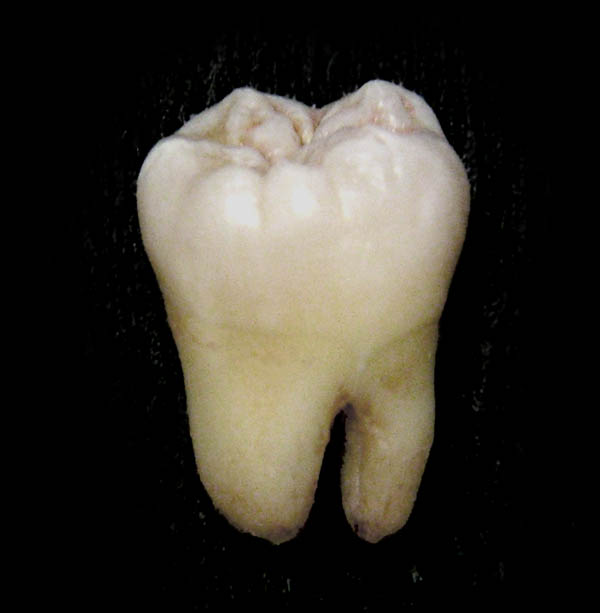Ancient tooth plaque
Interview with
Diet has always been an important factor throughout human history. But, looking back through time it becomes harder and harder to know what our ancestors were eating, especially before the dawn of agriculture.
back through time it becomes harder and harder to know what our ancestors were eating, especially before the dawn of agriculture.
One clue, however, may lie in the plaque on the teeth of ancient skeletons. Graihagh Jackson talked to Karen Hardy of the University of Barcelona, to find out more about what these gnashers can tell us...
Karen - The samples that we're looking at come from Central Sudan. It's an archaeological site that covers a timespan of around 9,000 years from before agriculture through the development and the introduction of agriculture right through to the late Neolithic period which ended at the beginning of the modern era. I was contacted by the excavators and they asked me if I would take a look at samples of dental calculus to see if we could degrade these and determine what people had been eating.
Graihagh - And when you say calculus, you mean tooth decay, tooth rot.
Karen - No, it's not tooth rot. It's actually dental plaque. If you don't clean your teeth, you get a sort of sticky film and when you go to the dentist, this is what they have to scrape off. So, within about a space of about 2 weeks, the dental plaque, if it's not cleaned off, calcifies and becomes hard. And then it keeps evidence of what has been ingested within the dental calculus.
Graihagh - So, what exactly did you find? What was in this plaque?
Karen - So, for example in this case, there was a very, very clear indication for something called rotundine, which exists in purple nutsedge. It's a plant that is very abundant in subtropical zones and in fact, is considered a real nuisance because it spreads very rapidly and is difficult to get rid of. Today, it's used as animal fodder. However, historically, it's known to have been used as a source of food, as a source of medicine. It was used as a perfume and also in water purification.
Graihagh - You're looking over quite a large timescale, all the way from the hunter gatherers, all the way through to the farmers and they continue to eat this purple nutsedge throughout. Normally, when you see a transition from hunter gatherers to farmers, you normally see a transition in what they're eating. So, why do you think they continue to eat this purple nutsedge?
Karen - This plant does have antibacterial properties as well. It is possible that they recognised and knew about the antibacterial qualities and may have made use of those. However, of course, we cannot say that. We have no idea why they ate it, but I'm sure that the primary reason for eating it would've been as a source of carbohydrates.
Graihagh - These antibacterial properties you're talking about, does that mean that their teeth were better than perhaps they would've normally been?
Karen - There have been some studies by plant biologists that suggest this plant can inhibit Streptococcus mutans. However, to make the leap from that to saying that their teeth in the agricultural periods were better, we can't actually do that It's a possibility.
Graihagh - What strikes me about these studies that previously, lots of people have looked at protein, but not really so much about vegetables and other elements of their diet. How have these techniques changed how we might look at our ancestors?
Karen - There is a big gap in our knowledge of hunter gatherer diets because the evidence is not there. Evidence for plants tends to disintegrate very quickly and it's very rare. I think that this type of study is certainly opening a window to gain access to a broader perspective on pre-agricultural, that is hunter gatherer diet in the past.
- Previous Bringing back the woolly mammoth
- Next Alzheimer's risk factors










Comments
Add a comment